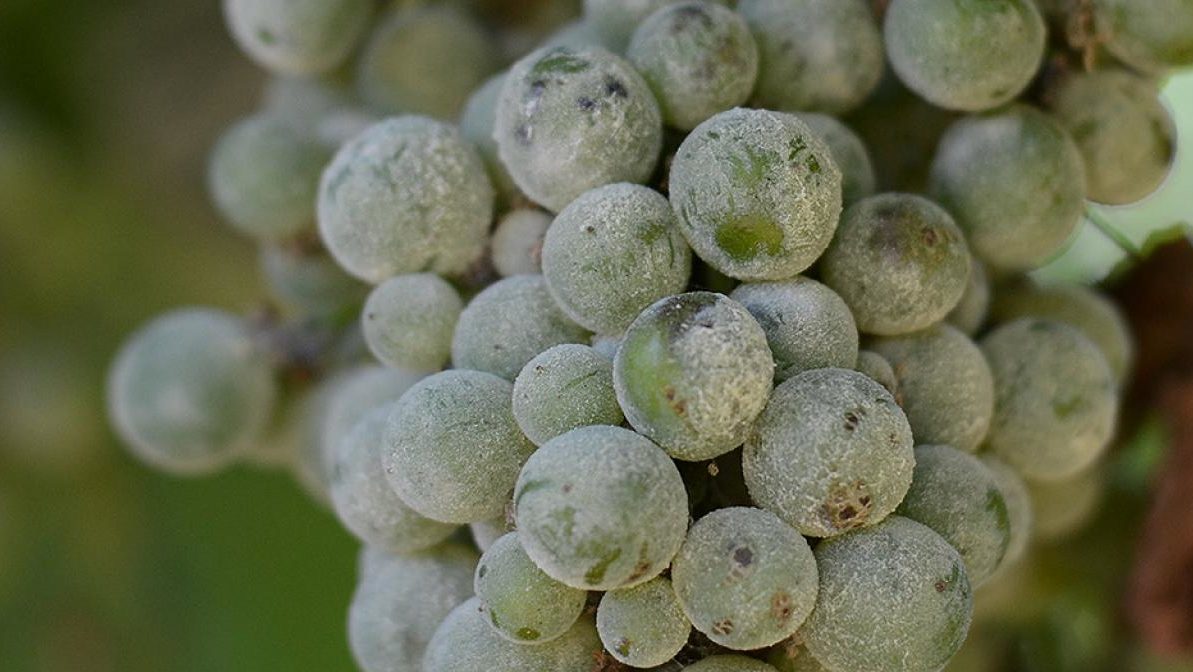In 2018, basal leaf mildew infections from ascospores weren’t as prevalent as in 2017, nor was the season as severe. This was due to less ascospore infections, and conditions were not as optimal for early expression. Some vineyards had issues, but control was easier to obtain. Mildew is typically a problem because of optimum temperatures for mildew growth, dense canopies, poor spray coverage, and spray intervals being too long. Mildew control chemicals are not as effective as they were a few years ago and resistance is becoming a problem. Thus, shorter spray intervals are critical early season and when conditions are optimum.
I expected to see more mildew problems in 2019 because of the wet spring. Perhaps the chronic wet suppressed some infections and it was a cooler spring, so conditions for mildew growth weren’t optimal. In most of the vineyards I worked with, growers were vigilant with early micronized sulfur applications which also helped. In vineyards where mildew was a problem later in the season, it was more of a spray coverage problem due to dense canopies from the wet spring, and untimely canopy management preventing optimum spray coverage.
In several locations, isolated mildew hotspots developed from abandoned vinifera vines or escaped vines growing in brush lines or along fences. It seems that the spray intervals weren’t tight enough to contend with the increased spore pressure in these cases.
Mildew Notes
Mildew epidemics are typically prevented in the first 3 months after bud break, even though heavy symptoms may not show up until 2 – 6 weeks prior due to veraison. This means using the best treatment materials early, adjusting rates and spray intervals based on current weather conditions.
Moderate and or isolated mildew infections that show up late season can be caused by poor spray coverage due to dense canopies or untimely leaf removal. Disease severity will increase when temperatures are optimum for mildew growth and spray intervals are too long.
Grape berries are the most sensitive to severe mildew infections until they are around pea size (ontogenic resistance). New infections after pea size will be less severe. Around 8 brix new infections won’t occur on berries, but established mildew will continue to grow long after. Also, rachis infections tend to stay active past harvest.
All mildew spray programs should start with 2 to 3 micronized sulfur sprays. In warm dry springs when growth is fast there may only be one or two. We would like to see sulfur tank mixed with the frac groups as a form of resistance management. Oil could be used as a tank mix in lieu of sulfur also.
A note on micronized sulfur spray intervals. When leaves are expanding, spray intervals should be 7-14 days. Fully expanded leaves sprays can go 21 days under low mildew pressure. At temperatures below 59 degrees the vapor phase of sulfur doesn’t work, but sulfur will work at preventing mildew spores from germinating when it is present on the leaves.
Note on Stylet Oil and other narrow range oils. Oils can help to eradicate mildew, but they are not really good at preventing mildew. Spores can germinate on oil after 1 to 2 days. Work done in Oregon and New York plus my observations over the years confirms this.

